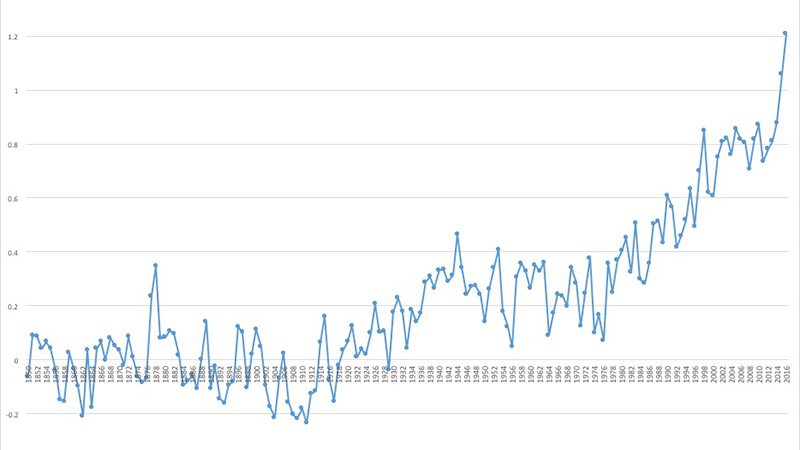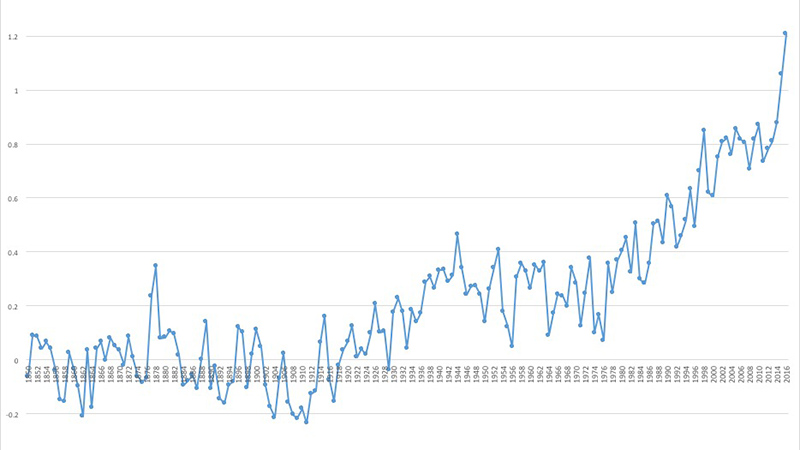The first half of 2016 has seen astonishing growth in global average temperatures, building on similar growth in 2015, meaning that it is now all but certain that we will see a record, fifth, successive annual increase this year.
Last October, I predicted that 2016 would be a record warm year, in a global temperature record going back to 1850, based on the observation that the natural El Nino warming effect often straddles two years, in this case from 2015-2016.
El Nino is a natural, cyclical weather phenomenon. The present cycle peaked in November last year, but its effects have lingered. As well as contibuting to regional weather effects, it is associated with higher global average temperatures.

(Graph: GWG Energy)
The chart below takes the latest global temperature data to June 2016, from Britain’s Hadley Centre/ Climatic Research Unit (CRU).
Using a technique advised by CRU climate scientists, I have switched the data from a 1961-1990 baseline to an 1850-1900 baseline, so that we can see the warming effect compared with “pre-industrial” levels.
That pre-industrial reference is relevant, given that scientists measure climate threats in terms of global average warming above pre-industrial levels, with 2 degrees Celsius warming often discussed as a safety “guardrail” which we should not exceed.
Similarly, world leaders recently agreed targets to limit climate change, in terms of warming limits compared with pre-industrial levels, targeting warming “well below 2C” as a long-term goal, and to pursue efforts to go further and hold warming to 1.5C.

(Graph: GWG Energy) Global average warming 1850-2016 (YTD), compared with 1850-1900 baseline
The chart shows that, so far, 2016 has seen an average 1.21C warming above 1850-1900 levels, a big increase on the 1.06C warming last year, in turn a big increase on 0.88C warming the year before.
El Nino contributed to a record warm month in March 2016, compared with the 1850-1900 baseline, at 1.46C above pre-industrial levels.
Since March, global average temperatures have fallen, but monthly averages have remained more than 1C above the 1850-1900 baseline through the first six months of the year.
What the chart shows is a rather vicious, warming trend, which has progressed in almost a straight line since the mid-1970s, after removing annual variation due to natural events such as El Nino.
It shows the continued warming impact of greenhouse gases already in the atmosphere, and the impact of adding record amounts of additional carbon dioxide and other GHGs to the atmosphere each year.
It puts into perspective recently stalled growth in annual emissions – a great achievement in itself, but only a first step in addressing the climate change problem.
And it calls into question the judgement of climate sceptics – such as Britain’s former finance minister Nigel Lawson – who claimed that global warming had stopped, in the years following the last major El Nino in 1998.
Gerard Wynn is an energy and climate concultant. This article first appeared on Energy & Carbon. Follow him on twitter @gerardfwynn
